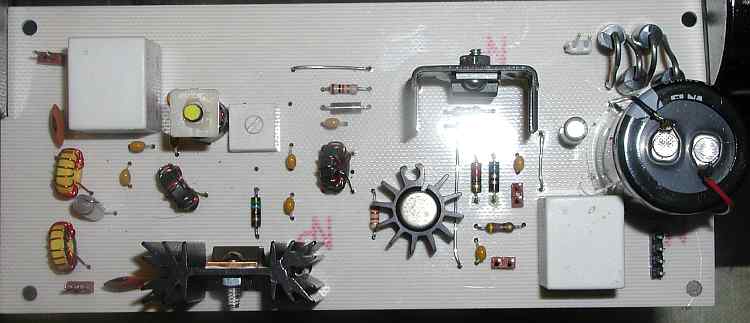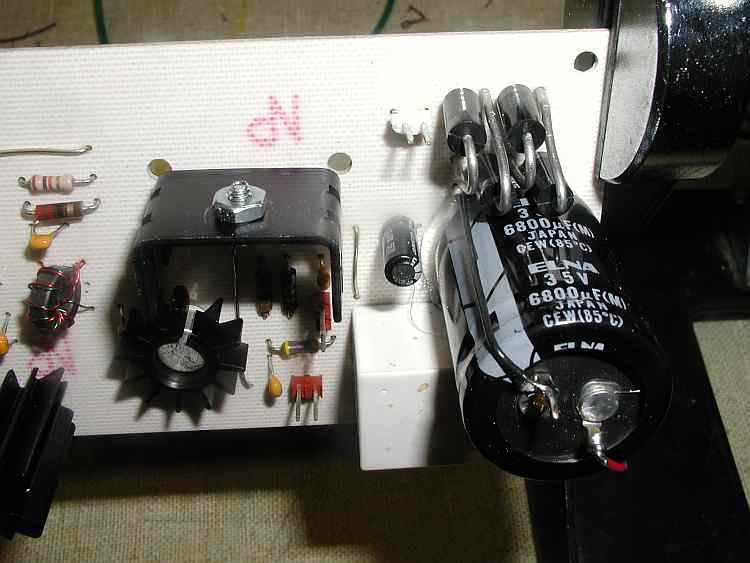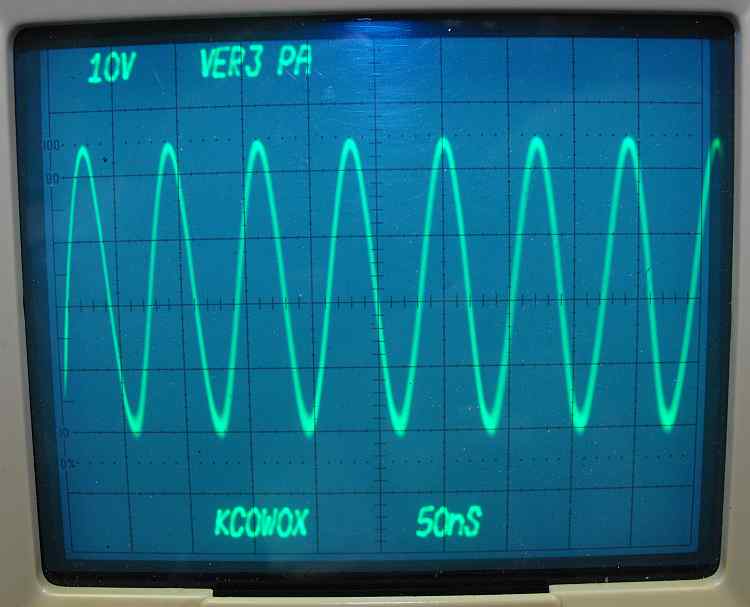

The version 3 linear amplifier board has 2 very nice additions. The first, the RF signal is switched between rx and tx by relays. This cures a problem I found with the Far Circuits board that I cured by adding relays. The other main addition is an AC power supply. It is setup to accept an AC input and has a rectifier and voltage regulator on board. This allows 13 volts to be fed to the bitx board for it's supply voltages and a higher voltage unregulated to be used on the IRF510. Above is the original board setup.
I made a few modifications to the board. The board looks like this. Power supply on the right and the IRF510 lower left on the big heat sink.

I wanted to use a 22 vac transformer that I had so I needed to use a 35 volt capacitor. I had a 6800 mfd at 35 volts in the junk box so I used it. I had to move the 2 - .1 ufd capacitors to get room for the big filter cap so I put them on the back of the board using some chip caps I had. The spacing worked out just right. Just to the right of them is the original pads for the 2 electrolytic caps.

I used 3 amp silicon diodes so I had to drill out the holes a little and then stand them up vertically. The 6800 ufd cap was hot melt glued to the board after soldering the wires for it into place.

After hooking up the power transformer, I measured 30 vdc for the IRF510 and 13.6 volts for the bitx.
When adjusting the bias, I burned up a IRF510 for the first time in working on 5 linears. I have since reduced the final voltage to 20 volts and the board seems to be more stable.

I hooked it up to the exciter board, connected a dummy load, and added modulation using a function generator.

55 volts of 14.250 mhz. Power out = 5 watts. That's about as good as I've seen for my single IRF510 amps at 14 mhz. Next step, put it on the air.